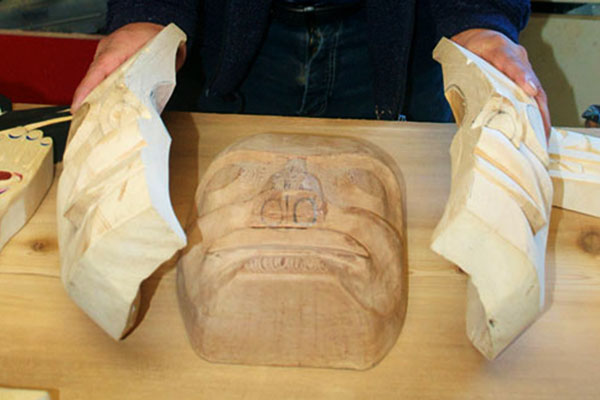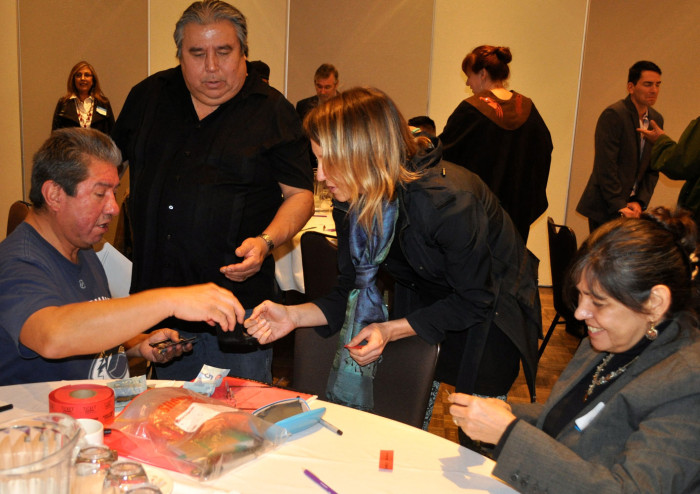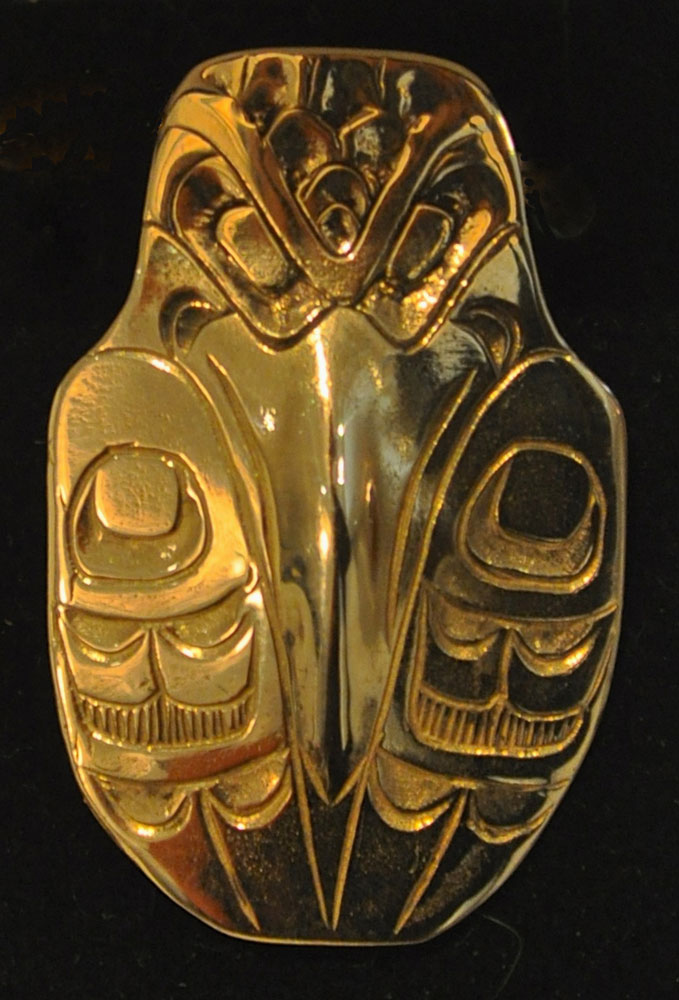The Indian in the Child
By Patricia McDougall
Powerful carvings by Darren Blaney of Homalco will soon be installed at a Campbell River school as a lasting lesson about residential schools and their effect on the children in all of us.
The smell of fresh-cut cedar filled the air as I approached the door to Darren Blaney’s workshop. Peering inside, cedar was everywhere, from small key-chain size paddle carvings to 18-foot planks one foot thick. Projects were in various stages of completion, as with the ebb and flow of the tides the pieces transform as inspiration hits and creativity flows.
Lying on a workbench are carvings in progress of a raven dancer, a wolf dancer and two masks. Renowned artist and leader, the councillor for the Homalco First Nation is working on a project that will reside in Southgate Middle School when completed.
Darren’s inspiration began when he heard from his son about the naiveté of fellow classmates with regard to First Nation cultures and traditions. The art piece is comprised of carvings representing the impacts of the residential school system and Blaney’s telling of his own nation’s creation story.
In the centre is a transformation mask, the ‘Indian in the child, two masks in one. The outer mask of yellow cedar represents the colonialism that attempted to assimilate First Nations people and the policy of government-funded residential schools. An inner mask is of darker red cedar.
Flanking the masks are carvings of a raven and a wolf. Raven, in traditional stories, always called the meetings, getting everyone together. Raven was called upon to deal with any issues that arose, he said. “The wolf is where our people come from, part of the creation story.”
When complete, the carvings will be mounted on a cedar plank and installed at the school and will become a part of the teachings about the deep-rooted impacts of residential school.
Most cultures have creation stories. But all too often in Canada, the dominant culture does not understand First Nation tradition and culture. Even with the evolution of information technology and an openness to share history and stories, it is still mystifying to many why “Indians don’t just get over it and move on”.
Darren figured that his son’s experience of fellow students not knowing about the effects of residential school on generations of aboriginal peoples was a good place to start educating.







